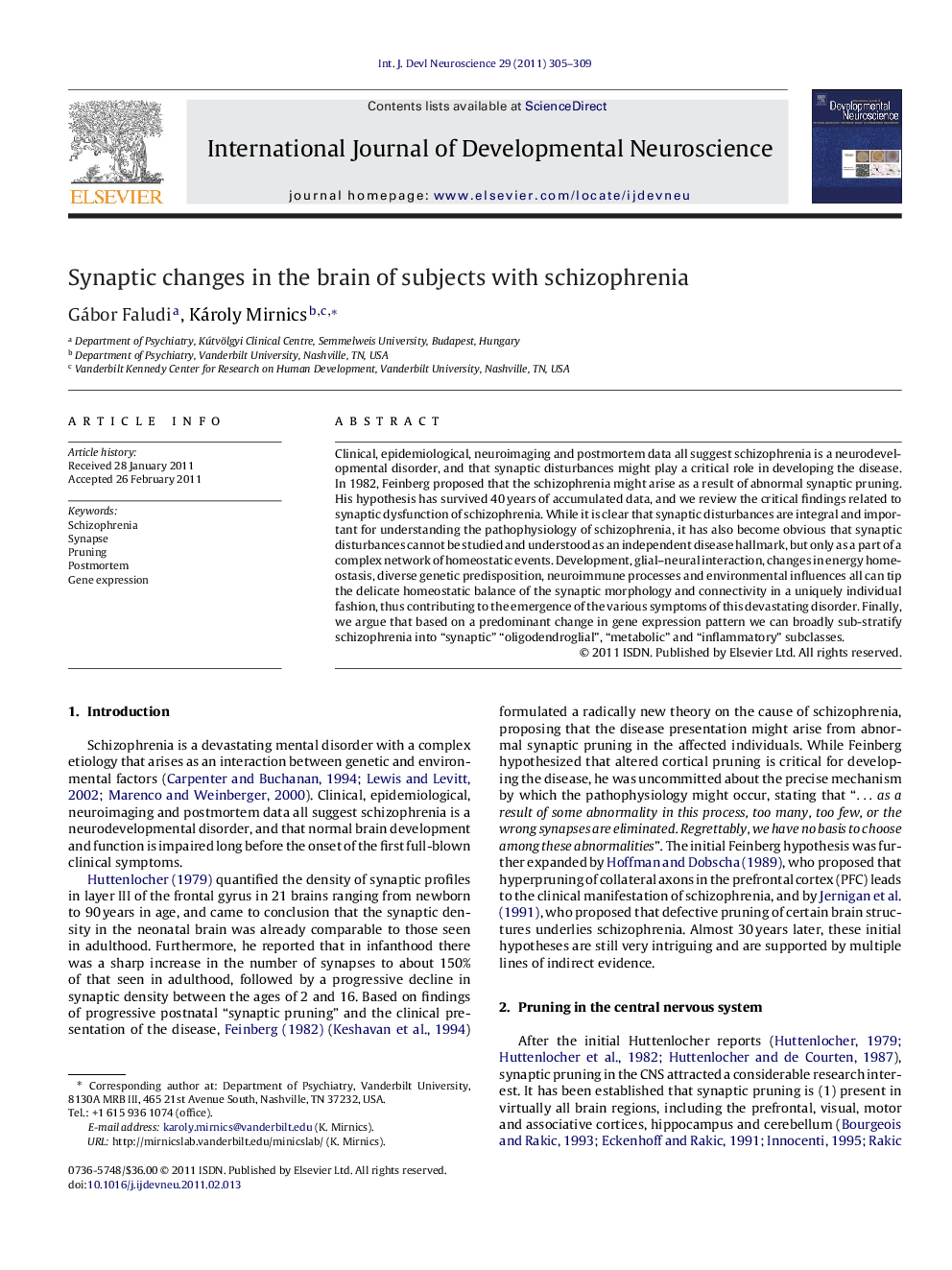| Article ID | Journal | Published Year | Pages | File Type |
|---|---|---|---|---|
| 2786627 | International Journal of Developmental Neuroscience | 2011 | 5 Pages |
Clinical, epidemiological, neuroimaging and postmortem data all suggest schizophrenia is a neurodevelopmental disorder, and that synaptic disturbances might play a critical role in developing the disease. In 1982, Feinberg proposed that the schizophrenia might arise as a result of abnormal synaptic pruning. His hypothesis has survived 40 years of accumulated data, and we review the critical findings related to synaptic dysfunction of schizophrenia. While it is clear that synaptic disturbances are integral and important for understanding the pathophysiology of schizophrenia, it has also become obvious that synaptic disturbances cannot be studied and understood as an independent disease hallmark, but only as a part of a complex network of homeostatic events. Development, glial–neural interaction, changes in energy homeostasis, diverse genetic predisposition, neuroimmune processes and environmental influences all can tip the delicate homeostatic balance of the synaptic morphology and connectivity in a uniquely individual fashion, thus contributing to the emergence of the various symptoms of this devastating disorder. Finally, we argue that based on a predominant change in gene expression pattern we can broadly sub-stratify schizophrenia into “synaptic” “oligodendroglial”, “metabolic” and “inflammatory” subclasses.
► Synaptic disturbances are integral and important part of schizophrenia pathophysiology. ► Synaptic disturbances cannot be studied and understood as an independent disease. ► We propose a molecular sub-stratification of schizophrenia into “synaptic” “oligodendroglial”, “metabolic” and “inflammatory” subclasses.
